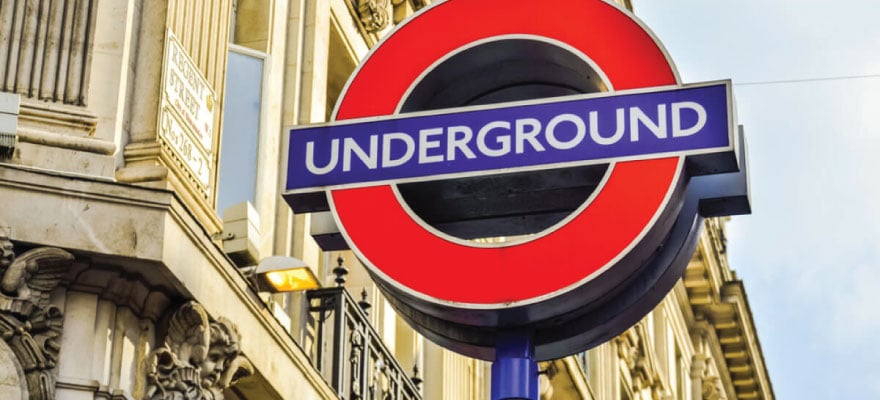Forex Broker Samtrade FX Secures UK and Australian Licences
- Samtrade UK International Limited has been authorized as an appointed representative by the FCA.

Samtrade FX, an online foreign exchange (Forex Forex Foreign exchange or forex is the act of converting one nation’s currency into another nation’s currency (that possesses a different currency); for example, the converting of British Pounds into US Dollars, and vice versa. The exchange of currencies can be done over a physical counter, such as at a Bureau de Change, or over the internet via broker platforms, where currency speculation takes place, known as forex trading.The foreign exchange market, by its very nature, is the world’s largest tradi Foreign exchange or forex is the act of converting one nation’s currency into another nation’s currency (that possesses a different currency); for example, the converting of British Pounds into US Dollars, and vice versa. The exchange of currencies can be done over a physical counter, such as at a Bureau de Change, or over the internet via broker platforms, where currency speculation takes place, known as forex trading.The foreign exchange market, by its very nature, is the world’s largest tradi Read this Term) and CFD Trading Platform Trading Platform In the FX space, a currency trading platform is a software provided by brokers to their respective client base, garnering access as traders in the broader market. Most commonly, this reflects an online interface or mobile app, complete with tools for order processing.Every broker needs one or more trading platforms to accommodate the needs of different clients. Being the backbone of the company’s offering, a trading platform provides clients with quotes, a selection of instruments to trade, real In the FX space, a currency trading platform is a software provided by brokers to their respective client base, garnering access as traders in the broader market. Most commonly, this reflects an online interface or mobile app, complete with tools for order processing.Every broker needs one or more trading platforms to accommodate the needs of different clients. Being the backbone of the company’s offering, a trading platform provides clients with quotes, a selection of instruments to trade, real Read this Term, announced this Wednesday that it had secured licenses both within the United Kingdom and Australia.
In a company statement, the brokerage revealed that it had been registered and authorized as an Appointed Representative by the Financial Conduct Authority (FCA) under reference number 929921. According to the UK regulator’s register, Samtrade UK International Limited is the company that has been authorized as of the 15th of July 2020.
In addition to having Samtrade UK International Limited authorized as an appointed representative, Samtrade FX also said today that it had obtained an Australian Financial Services (AFS) license from the Australian Securities and Investments Commission (ASIC) under registration number 001281861. Finance Magnates has not been able to confirm this information.
Samtrade FX was set up in 2015. The company has expanded its presence across Europe, Southeast Asia, and Greater China. The broker uses the MetaTrader 4 platform to provide its services.
Samtrade FX secures Vic Tham for compliance
In addition to securing the new licenses, Samtrade FX also revealed that it had appointed Vic Tham as its Global Chief Risk and Compliance Officer. According to his LinkedIn profile, Tham has worked at a number of financial giants such as Bank of America Merrill Lynch and Standard Chartered.

Sam Goh, Founder and CEO of Samtrade FX
Source: LinkedIn
Commenting on the range of developments, Sam Goh, Founder and CEO, Samtrade FX said in the statement: “Since incorporation, ensuring trust and confidence in every trade has been central in everything that we do.
“These added layers of regulation – on top of the existing licences that Samtrade FX already holds, reinforces our commitment toward setting the highest possible standards in corporate governance, trading experience, and client satisfaction. It also enhances SamAideTM, which offers robust fund security for clients to trade with a peace of mind.”
Samtrade FX, an online foreign exchange (Forex Forex Foreign exchange or forex is the act of converting one nation’s currency into another nation’s currency (that possesses a different currency); for example, the converting of British Pounds into US Dollars, and vice versa. The exchange of currencies can be done over a physical counter, such as at a Bureau de Change, or over the internet via broker platforms, where currency speculation takes place, known as forex trading.The foreign exchange market, by its very nature, is the world’s largest tradi Foreign exchange or forex is the act of converting one nation’s currency into another nation’s currency (that possesses a different currency); for example, the converting of British Pounds into US Dollars, and vice versa. The exchange of currencies can be done over a physical counter, such as at a Bureau de Change, or over the internet via broker platforms, where currency speculation takes place, known as forex trading.The foreign exchange market, by its very nature, is the world’s largest tradi Read this Term) and CFD Trading Platform Trading Platform In the FX space, a currency trading platform is a software provided by brokers to their respective client base, garnering access as traders in the broader market. Most commonly, this reflects an online interface or mobile app, complete with tools for order processing.Every broker needs one or more trading platforms to accommodate the needs of different clients. Being the backbone of the company’s offering, a trading platform provides clients with quotes, a selection of instruments to trade, real In the FX space, a currency trading platform is a software provided by brokers to their respective client base, garnering access as traders in the broader market. Most commonly, this reflects an online interface or mobile app, complete with tools for order processing.Every broker needs one or more trading platforms to accommodate the needs of different clients. Being the backbone of the company’s offering, a trading platform provides clients with quotes, a selection of instruments to trade, real Read this Term, announced this Wednesday that it had secured licenses both within the United Kingdom and Australia.
In a company statement, the brokerage revealed that it had been registered and authorized as an Appointed Representative by the Financial Conduct Authority (FCA) under reference number 929921. According to the UK regulator’s register, Samtrade UK International Limited is the company that has been authorized as of the 15th of July 2020.
In addition to having Samtrade UK International Limited authorized as an appointed representative, Samtrade FX also said today that it had obtained an Australian Financial Services (AFS) license from the Australian Securities and Investments Commission (ASIC) under registration number 001281861. Finance Magnates has not been able to confirm this information.
Samtrade FX was set up in 2015. The company has expanded its presence across Europe, Southeast Asia, and Greater China. The broker uses the MetaTrader 4 platform to provide its services.
Samtrade FX secures Vic Tham for compliance
In addition to securing the new licenses, Samtrade FX also revealed that it had appointed Vic Tham as its Global Chief Risk and Compliance Officer. According to his LinkedIn profile, Tham has worked at a number of financial giants such as Bank of America Merrill Lynch and Standard Chartered.

Sam Goh, Founder and CEO of Samtrade FX
Source: LinkedIn
Commenting on the range of developments, Sam Goh, Founder and CEO, Samtrade FX said in the statement: “Since incorporation, ensuring trust and confidence in every trade has been central in everything that we do.
“These added layers of regulation – on top of the existing licences that Samtrade FX already holds, reinforces our commitment toward setting the highest possible standards in corporate governance, trading experience, and client satisfaction. It also enhances SamAideTM, which offers robust fund security for clients to trade with a peace of mind.”
